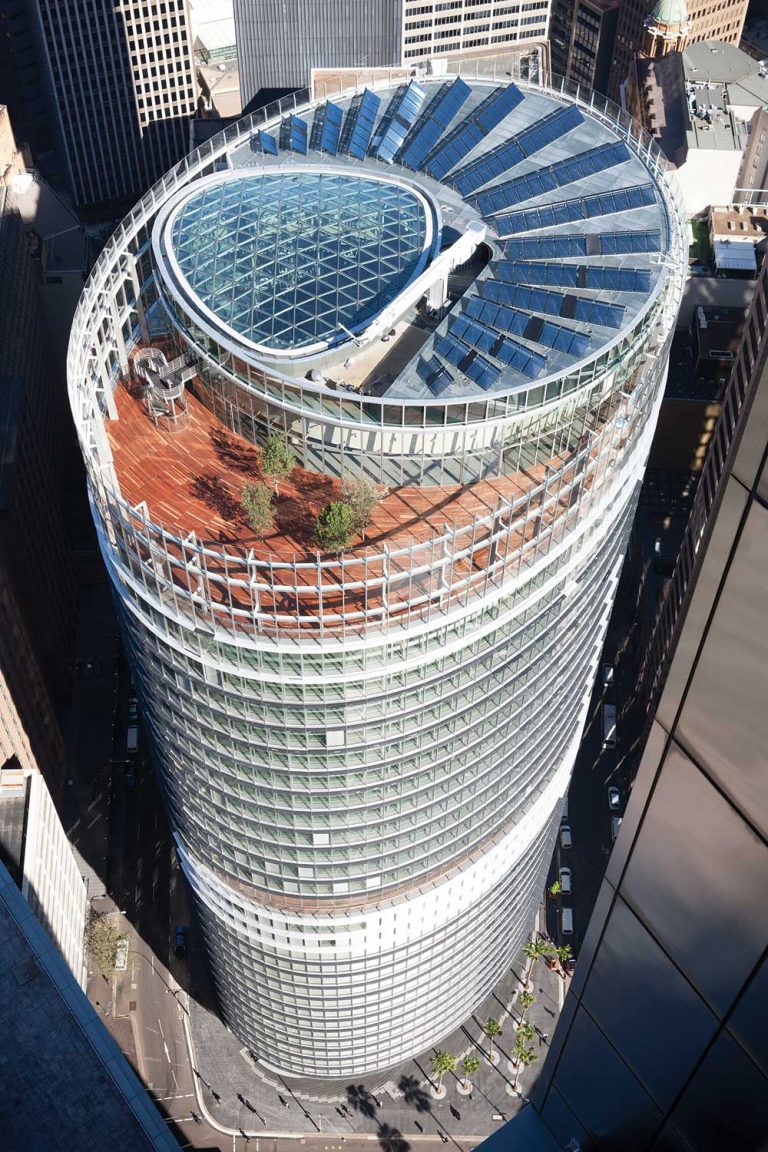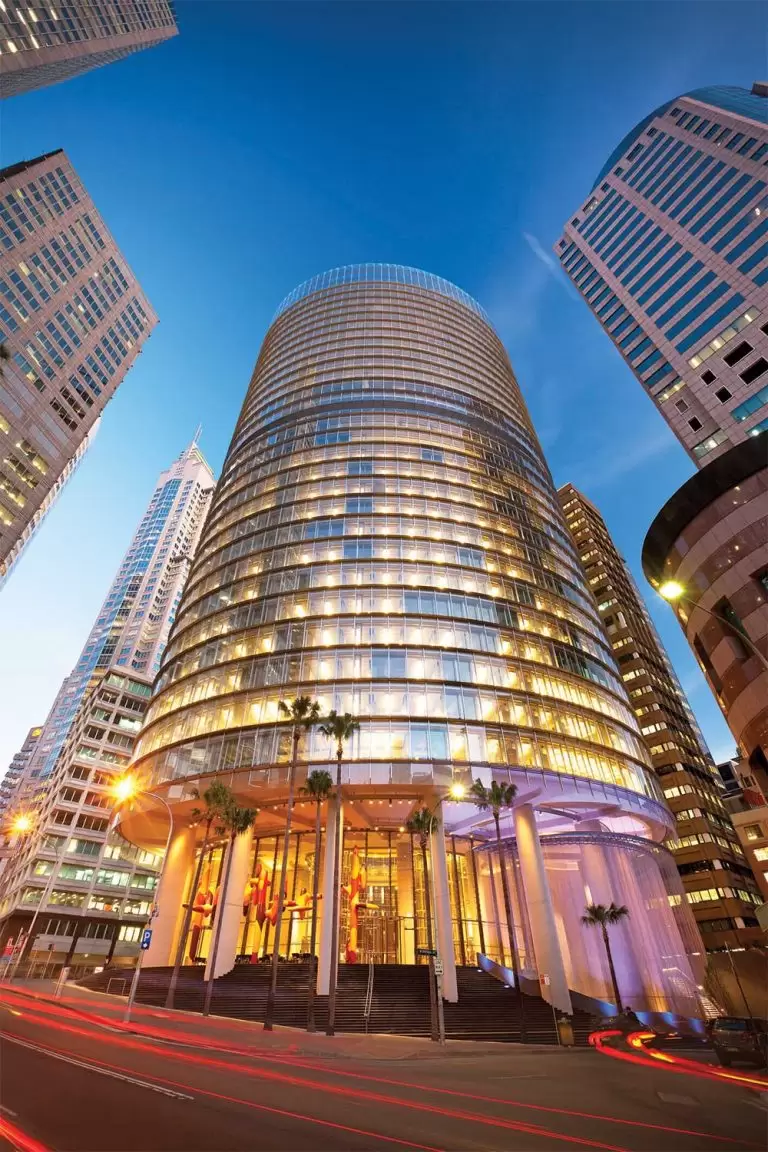A career in façade engineering has the new co-chair of Arup ready to take the company into a new era of sustainable development.
In the two decades since she began her engineering career, Kerryn Coker CPEng has become an expert in bringing people together.
“To be successful, façade engineers must provide a bridge between engineering and architecture,” she said, referring to the specialty that she built her career on. “Now that sustainability has become a priority for the entire construction industry, they are more important than ever.”
And though Coker is no longer on the frontline as a façade engineer, she still puts her skills as a facilitator and diplomat to use.
In her new position as Co-Chair of the Arup Australasia Region, she is jointly responsible for leading a group of almost 3000 people. Those specialists work across a wider range of disciplines than at any time in Arup’s 75-year history.
With Co-Chair Kate West CPEng, Coker intends to honour the firm’s engineering heritage while considering the needs of the future. Their top priority: to solidify Arup’s commitment to sustainable development and confirm its leadership position in that space.
“We’re going to be pretty brave and bold in how we lead,” Coker said, noting Arup’s recent adoption of the United Nations Sustainable Development goals.
“We want to change our everyday practices so we are consistently considering sustainability principles, including embodied carbon, resilience and the circular economy.”
Coker knows her organisation well: over the past 17 years, she has worked for Arup in London and Sydney, first as a dedicated façade engineer, then as a project manager and, later, a group leader.

Northern exposure
Her move to the UK in 2004, Coker said, was motivated largely by a desire to experience life in the fast-paced Northern Hemisphere.
But she quickly discovered that working as a façade engineer on the other side of the world provided other benefits.
“Up until that point, I had been designing for the Sydney climate, but suddenly I was dealing with a cold climate with quite different design drivers,” she said.
“In Australia, the focus is on stopping solar gains entering buildings through high-performance glazing with solar control coatings and external and internal shading. By contrast, in a cold climate such as the UK, keeping heat inside the building in winter is a key design consideration. This results in the use of double or triple-glazed units, and thermal breaks within the extruded aluminium frames to inhibit the transfer of warm air from inside to outside.”
Coker is particularly proud of Arup’s work on Kings Place, a mixed-use development containing a 420-seat recital hall.
“That building featured unique cladding systems, including a double-skin façade with curved glass, and several curved precast concrete façades faced with Jura limestone,” she said.
“Achieving all that was technically quite complex. Different fabrication options were considered to form the curved glass, including cold bending the glass. Ultimately, the panels were formed using moulds in a carefully temperature-controlled furnace to create the desired radius curves while enabling the use of annealed laminated glass, which was preferred for its visual clarity.”
New opportunity
Coker’s return to Australia in 2007 coincided with a global groundswell of interest in sustainable construction. At the same time, new technologies such as innovative glass coatings were making it possible for façade engineers to radically improve a building’s sustainability profile.
As the leader of Arup’s façade team in Sydney, Coker worked on projects that included 1 Bligh Street and 8 Chifley Square in Sydney, and NewActon Nishi in Canberra. In that time, she says, Australian skylines evolved significantly.
“There’s been significant development in glass technology, with new coatings that transmit high levels of daylight while providing excellent solar control. You see it now when you look across the Sydney skyline, from the older, quite dark glass buildings to the newer developments that appear much more transparent.”
Another shift has been towards increasingly sophisticated operable façades.
“The old concept of a sealed and air-conditioned box is being replaced by mixed-mode spaces offering natural ventilation and greater occupant control,” she said.
Meanwhile, as a formal and informal mentor, Coker has been guiding Arup’s young women engineers, particularly those facing the challenges that come with balancing work and family.
“Outside Arup, I have encouraged the next generation, urging them through school presentations to take up STEM subjects and to follow careers in the built environment,” she said.




Holistic design
In 2017, Coker decided she wanted to develop her knowledge of holistic building design. She credits Arup for encouraging her to do so.
“I approached my leaders at the time and said, ‘I’m thinking of having a shift in my career path’,” she said. “They soon found an opportunity for me to step into a newly created role within the business, leading multi-disciplinary teams on complex projects.”
She said Arup’s willingness to find fresh opportunities for curious employees looking for new challenges has helped the company build and retain a diverse workforce. She plans to continue to encourage this sort of creative re-deployment in her new leadership role.
That role was previously held by one person, but Coker and West applied jointly and have divided responsibilities in line with the pillars of Arup’s regional strategic plan. Coker’s focus includes implementing the company’s sustainable development strategy.
West said she and Coker are “naturally collaborative”.
“We enjoy working in teams and partnerships to test, challenge and optimise our thinking and solutions. We believe that this Co-Chair arrangement, while unusual, offers greater capacity and in-built quality assurance,” she said.
For Coker, who has long championed inclusion, it’s a natural progression.
“We hope that by bringing diversity of thought to big decision-making, we can make better decisions more efficiently.”
Peak performance
Among the projects that Coker has contributed to during her time in Sydney, 1 Bligh Street stands out.
Coker worked with the architects Ingenhoven and Architectus to design a double-skin façade that incorporates external operable blinds to minimise solar gains while maximising daylight and views.
The building also boasts a full-height central atrium ventilated via operable glass louvres — an Australian office first. These innovations complement the building’s elliptical-shaped floor plates, which enable 74 per cent of the floor space to be within eight metres of either the façade or the atrium, providing large amounts of natural light and views in all directions.
The tower, which was completed in 2011, became the first Australian high-rise building to receive a six-star Green Star rating.
“One Bligh Street utilised innovative façade technologies and design to deliver a unique and highly sustainable landmark building,” Coker said.
“It was a career highlight.”




How the role of engineers has evolved. To claim a career built on such a narrow task as facade engineering in the 70s and 80s would have invited derision. Now, once considered simple solutions, have been elevated to claim it now inspiring to incorporate additional layers of glass and thermal break frames to achieve sustainability.